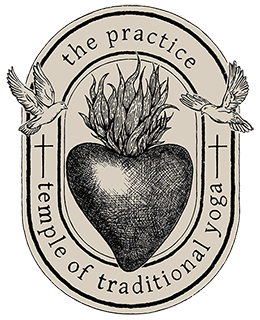by Ellen Arthur.
I’ve always been very devoted. As a child I remember sitting in the church pews, head bowed in respect and honour, holy communion, eulogies, older people hugging and kissing you saying how much you had grown. We were a devoted family, to community, tradition and faith. Then came school and my friends, relationships and work, all with their own kind of devotion.
Throughout our lives faith is present, in many ways it is what binds one moment to the next, one thought to another. Faith and devotion are often spoken about together. With faith comes devotion, when we have faith, the devotion we need in order to commit to something is taken very seriously, our spiritual evolution depends upon our faith and devotion.
As soon as I was exposed to mantra I knew it was something worth exploring. I connected instantly and deeply with its purity and the way it somehow (magically) fulfilled me. It was as if I was being summoned, mantra was an elixir, a clear voice guiding me down a path I recognised, the path of devotion.
This path of yoga is called Bhakti Yoga and it comprises many different aspects of devotion from the gross to the subtle, from the outwardly expressive to the internal and silent. To western yogi’s, Bhakti yoga is synonymous with Kirtan, but it is so much more. This path is all about devoting oneself to seeing God everywhere, listening to scriptures, meditating upon and acting in service of God.
True Bhakti Yoga or true Bhaktas (those who practice Bhakti Yoga) see God as a personified form, something the devotee can relate to like a mother, a father, a sister. That way the devotion can be sent directly to God or to divine love.
Our true self can only find fulfilment once it has merged with divine love. How do we do this? It is said this union is made possible through the gateway of the heart. If practice is persistent and earnest the portal of the heart opens us to an all pervasive universe that connects us both physically, energetically and spiritually to an inner knowing, to the big idea of life, of dharma. Here the development of sweetness and devotion unfolds.

To invite this sweetness in, it is best to surround yourself with people who sing to God, pray to God and devote themselves to the divine, because naturally and overtime our own hearts begin to blossom. True devotees have hearts like flowers, they are constantly pointing their hearts and their devotion toward the sun, toward Source. This then, enriches and sustains their very lives. Increasing their level of faith and their ability to draw more and more abundance toward them and those around them.
Bhakti Yoga is said to be one of the most accessible forms of yoga due to its simple requirement of opening the heart to God. However this simplicity can be misleading. Throughout our lives we have developed many preferences, opinions and ideas about ourselves and the world. Which in turn begins to hardened the wall around our hearts making the journey toward that sacred place turbulent. Our ego can persist and deny our entry, our fears and doubts can halt our expedition. So the message is to go simply and to go sweetly. To remain the witness, the curious traveller. To honour emotion and any discomfort as new territory, new terrain for you to explore. Over time and very subtly our hard exterior begins to soften.
For some of us this softening takes months, for others years, and for most of us decades, even life times. Don’t let this deter you, we must remember that it is not the pace of our awakening that determines our “success” but our dedication and unwavering commitment to showing up for ourselves again and again. For the sake of clearing and cleaning the heart and living from that place of compassion and divine love. Let your prayers be simple and humble. May we pray that the grace of devotion touches our lives and purifies our hearts.
“The heart is limitless and, because it has no form, it can contain totality.” – Ramana Maharshi
